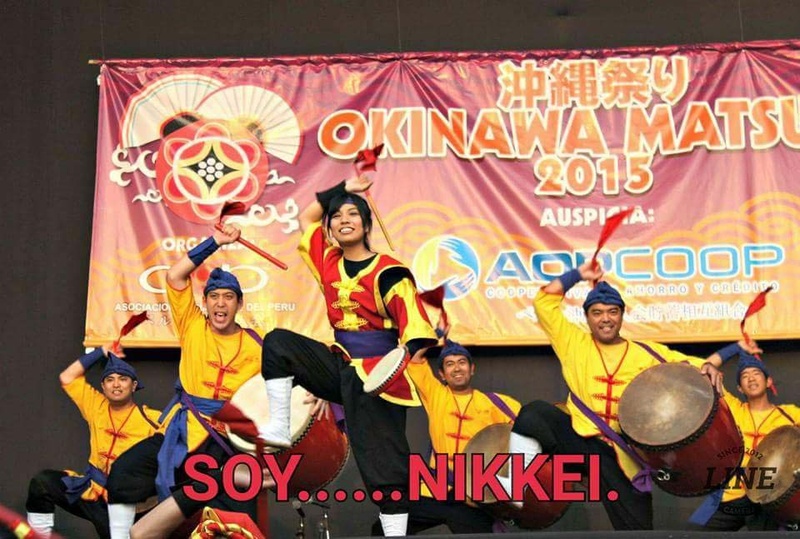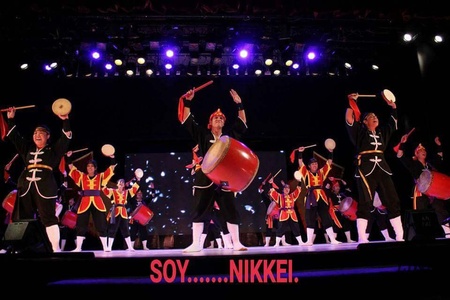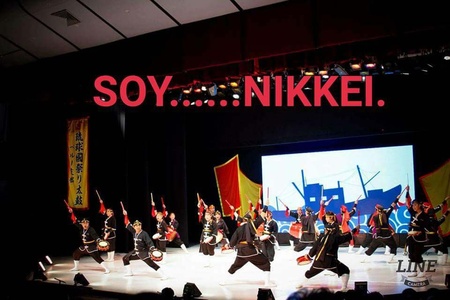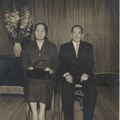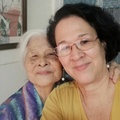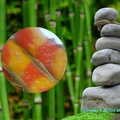On October 22, 2017, a census was carried out in Peru. Aside from the data that was collected for the first time so that Peruvians could “self-identify,” it served to define us in terms of our ethnic identity. While it is true, we are all Peruvians, we will be able to say how we feel about our customs, our ancestors, our roots. What caught our attention is that those of Asian origin in general were not considered an option, so a current of a group of young people of Japanese descent with very commendable work was formed: “I AM NIKKEI”, which made everyone Let's start reflecting on that, it served to make our voice heard, that although it is true we are a minority, we have an important presence, in this way everyone demanded that it be written “I AM NIKKEI”, since that option did not exist.
For that, each one asked themselves what it means to be Nikkei, there is no question of being Peruvian or not, what it is about is reaffirming and being considered for our origins. In my case, my paternal and maternal grandparents came from Japan, from the island of Okinawa, my parents were born in Peru just like me, so I am the third generation, I am a sansei. Therefore I AM NIKKEI.
In my house we eat ceviche, rice with chicken, huancaína potatoes, we like anticuchos, picarones and we drink chicha morada, we eat with a knife and fork. But we also eat sashimi, tempura, soba, harusame, maki, sata andagui and use ohashi . But when there is a gathering, like in many homes like mine, a birthday, a celebration, our table is mixed with chicken rice , sashimi, tempura . In each of our homes the mixture of Japanese and Peruvian food was born, the fusion of two cultures; At home my mother prepared ceviche with kiuri (Japanese cucumber), several friends who tried it liked it and wondered what it was, she cut it very small, but it gave the ceviche crunch, without being as strong as onion; the rest prepared the same. Our remembered Rosita Yimura created the octopus al olivo, which is an octopus cut like a sashimi, but she added olives to the mayonnaise. In this way, how many have improvised and replaced some Peruvian ingredients with those of Japanese food. Therefore I AM NIKKEI.
At home, my parents decided to be Catholic, perhaps initially to adapt to Peruvian society and integrate. They were baptized, married in the church, and each of us, their children, were baptized. I studied at a Catholic school: Nuestra Señora de La Merced and I don't regret it at all, I am proud and I continue to believe in God, my children are also Catholic. But in my house the butsudan is worn, we venerate our dead, this does not interfere with Catholicism, it is accepted by the Church, perhaps one of the most important Okinawan customs. Therefore I AM NIKKEI.
Many of us have friends, family, acquaintances who belong to our community, who stand out in many aspects such as sports; How many have reached Peruvian teams defending the national colors: soccer, volleyball, karate, judo, countless disciplines; also in art, in science, each one in their specialty, wherever they go they say with pride that they are Peruvian, therefore I AM NIKKEI.
Since I can remember, on the street, at school, they always called me “Chinese”, my father who had a winery, they called him “the Chinese man on the corner”; I told my mother: why? As a child you don't understand that we had other traits, she explained to me. I half understood it, he told me that my grandparents came from a very distant place which was Japan, so we are Japanese, I told him; No, we are Peruvians, he told me; then I don't understand you; But I began to realize that many words we used and customs were not the same, but I stayed with “hey, Chinese.” I always responded that I was Japanese, until I finally accepted it as something everyday. I have never been to Japan, but people say that they are treated like foreigners, for them they are Peruvians, despite having similar traits, even for everything the treatment is different: when buying, when working, the conditions are also different ; they call us gaijin; Many return saying that they feel strange, because here they treat us like Chinese and in Japan like foreigners, it is as if we were neither from here nor from there. That is why I come to the conclusion that I AM NIKKEI.
* This is an article I wrote for my Facebook page “De Todo Un Poco”, Roberto Oshiro, which was adapted to be written before the census in Peru.
© 2018 Roberto Oshiro Teruya


